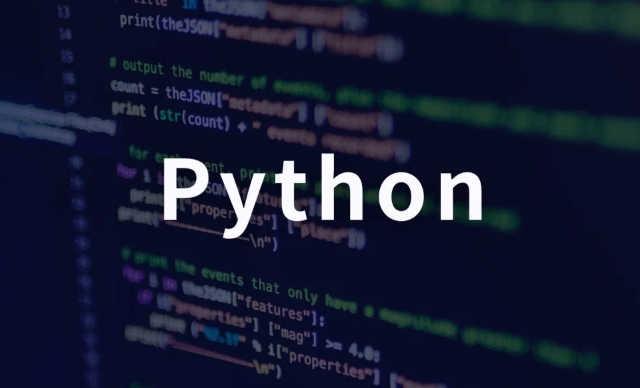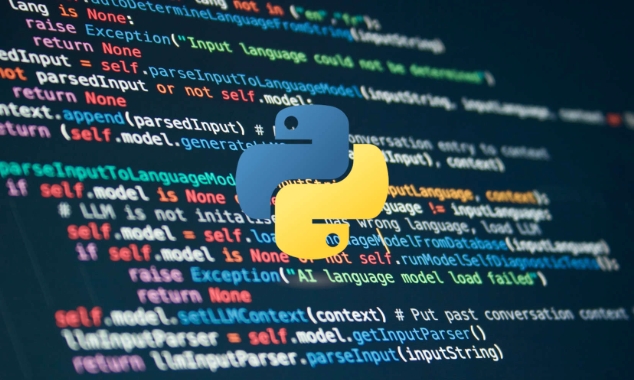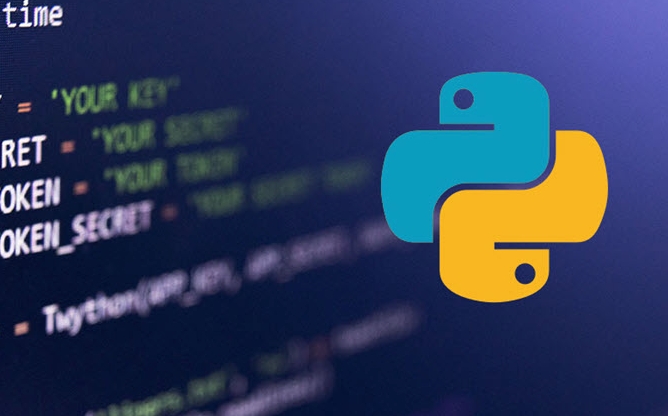Building Desktop Automation Tools with Python PyAutoGUI
Aug 01, 2025 am 06:41 AMTo build Python desktop automation tools, you can use PyAutoGUI to implement mouse, keyboard, image recognition and other operations. The specific steps include: 1. Install PyAutoGUI and Pillow to support image recognition; 2. Use the pyautogui module to implement mouse movement, click, drag and keyboard input; 3. Use the locationOnScreen() method to identify and locate screen elements; 4. Set pyautogui.PAUSE and pyautogui.FAILSAFE to improve script security; 5. Use position() and screenshot() to confirm the accuracy of location and area. Through these functions, tasks such as automatic form filling and program operations can be completed.

If you plan to build desktop automation tools in Python, PyAutoGUI is a very practical starting point. It can help you complete mouse control, keyboard input, screenshots and image recognition, and is very suitable for writing automated scripts for daily tasks.

Install PyAutoGUI and Basic Dependencies
Before using PyAutoGUI, you need to install it first. It can be installed via pip:
pip install pyautogui
If you also need image recognition (such as positioning buttons based on screenshots), you can install Pillow at the same time:

pip install pillow
After the installation is completed, you can import the module in the script and start writing code:
import pyautogui
Basic operation of mouse and keyboard
The most commonly used function of PyAutoGUI is to control the mouse and keyboard. For example, you can move the mouse to a certain position, click, drag, or simulate keyboard input.

Mouse operation example:
- Move the mouse to the specified coordinate:
pyautogui.moveTo(x, y) - Click the left mouse button:
pyautogui.click() - Drag the mouse:
pyautogui.dragTo(x, y, duration=0.5)
Keyboard operation example:
- Enter text:
pyautogui.write('Hello World') - Press Enter:
pyautogui.press('enter') - Key combination operation:
pyautogui.hotkey('ctrl', 'c')
These operations can be combined to complete some automated tasks, such as automatically filling in forms, opening programs, copying and pasting, etc.
Screen recognition and image positioning
PyAutoGUI supports positioning elements on the screen through image recognition. You can first take a screenshot of a button or icon, save it into an image file, and then use locateOnScreen() method to find its position on the screen.
Example:
button_location = pyautogui.locateOnScreen('button.png')
if button_location:
pyautogui.click(button_location)This feature is ideal for automating desktop programs without API interfaces. However, it should be noted that image recognition is more sensitive to resolution and interface changes, and is best used under a fixed interface.
Debugging and security settings for automated scripts
When writing automated scripts, it is easy to cause system instability due to misoperation, such as random mouse clicks or program stuck. PyAutoGUI provides some security mechanisms:
Pause function : automatically pauses for a period of time after each operation to avoid errors in execution too quickly. You can set the global pause time:
pyautogui.PAUSE = 1
Failed interrupt : The script can be interrupted by setting
pyautogui.FAILSAFE = Trueand quickly move the mouse to the upper left corner of the screen.
In addition, it is recommended to use pyautogui.position() to view the current position of the mouse when debugging, or use pyautogui.screenshot() to check whether the recognition area is accurate.
Basically that's it. Although the functions of PyAutoGUI are not complicated, they are enough to deal with many desktop automation scenarios. As long as you use the core functions of mouse, keyboard, and image recognition, you can write many practical gadgets.
The above is the detailed content of Building Desktop Automation Tools with Python PyAutoGUI. For more information, please follow other related articles on the PHP Chinese website!

Hot AI Tools

Undress AI Tool
Undress images for free

Undresser.AI Undress
AI-powered app for creating realistic nude photos

AI Clothes Remover
Online AI tool for removing clothes from photos.

Clothoff.io
AI clothes remover

Video Face Swap
Swap faces in any video effortlessly with our completely free AI face swap tool!

Hot Article

Hot Tools

Notepad++7.3.1
Easy-to-use and free code editor

SublimeText3 Chinese version
Chinese version, very easy to use

Zend Studio 13.0.1
Powerful PHP integrated development environment

Dreamweaver CS6
Visual web development tools

SublimeText3 Mac version
God-level code editing software (SublimeText3)

Hot Topics
 Polymorphism in python classes
Jul 05, 2025 am 02:58 AM
Polymorphism in python classes
Jul 05, 2025 am 02:58 AM
Polymorphism is a core concept in Python object-oriented programming, referring to "one interface, multiple implementations", allowing for unified processing of different types of objects. 1. Polymorphism is implemented through method rewriting. Subclasses can redefine parent class methods. For example, the spoke() method of Animal class has different implementations in Dog and Cat subclasses. 2. The practical uses of polymorphism include simplifying the code structure and enhancing scalability, such as calling the draw() method uniformly in the graphical drawing program, or handling the common behavior of different characters in game development. 3. Python implementation polymorphism needs to satisfy: the parent class defines a method, and the child class overrides the method, but does not require inheritance of the same parent class. As long as the object implements the same method, this is called the "duck type". 4. Things to note include the maintenance
 Python Function Arguments and Parameters
Jul 04, 2025 am 03:26 AM
Python Function Arguments and Parameters
Jul 04, 2025 am 03:26 AM
Parameters are placeholders when defining a function, while arguments are specific values ??passed in when calling. 1. Position parameters need to be passed in order, and incorrect order will lead to errors in the result; 2. Keyword parameters are specified by parameter names, which can change the order and improve readability; 3. Default parameter values ??are assigned when defined to avoid duplicate code, but variable objects should be avoided as default values; 4. args and *kwargs can handle uncertain number of parameters and are suitable for general interfaces or decorators, but should be used with caution to maintain readability.
 Explain Python generators and iterators.
Jul 05, 2025 am 02:55 AM
Explain Python generators and iterators.
Jul 05, 2025 am 02:55 AM
Iterators are objects that implement __iter__() and __next__() methods. The generator is a simplified version of iterators, which automatically implement these methods through the yield keyword. 1. The iterator returns an element every time he calls next() and throws a StopIteration exception when there are no more elements. 2. The generator uses function definition to generate data on demand, saving memory and supporting infinite sequences. 3. Use iterators when processing existing sets, use a generator when dynamically generating big data or lazy evaluation, such as loading line by line when reading large files. Note: Iterable objects such as lists are not iterators. They need to be recreated after the iterator reaches its end, and the generator can only traverse it once.
 Python `@classmethod` decorator explained
Jul 04, 2025 am 03:26 AM
Python `@classmethod` decorator explained
Jul 04, 2025 am 03:26 AM
A class method is a method defined in Python through the @classmethod decorator. Its first parameter is the class itself (cls), which is used to access or modify the class state. It can be called through a class or instance, which affects the entire class rather than a specific instance; for example, in the Person class, the show_count() method counts the number of objects created; when defining a class method, you need to use the @classmethod decorator and name the first parameter cls, such as the change_var(new_value) method to modify class variables; the class method is different from the instance method (self parameter) and static method (no automatic parameters), and is suitable for factory methods, alternative constructors, and management of class variables. Common uses include:
 How to handle API authentication in Python
Jul 13, 2025 am 02:22 AM
How to handle API authentication in Python
Jul 13, 2025 am 02:22 AM
The key to dealing with API authentication is to understand and use the authentication method correctly. 1. APIKey is the simplest authentication method, usually placed in the request header or URL parameters; 2. BasicAuth uses username and password for Base64 encoding transmission, which is suitable for internal systems; 3. OAuth2 needs to obtain the token first through client_id and client_secret, and then bring the BearerToken in the request header; 4. In order to deal with the token expiration, the token management class can be encapsulated and automatically refreshed the token; in short, selecting the appropriate method according to the document and safely storing the key information is the key.
 What are Python magic methods or dunder methods?
Jul 04, 2025 am 03:20 AM
What are Python magic methods or dunder methods?
Jul 04, 2025 am 03:20 AM
Python's magicmethods (or dunder methods) are special methods used to define the behavior of objects, which start and end with a double underscore. 1. They enable objects to respond to built-in operations, such as addition, comparison, string representation, etc.; 2. Common use cases include object initialization and representation (__init__, __repr__, __str__), arithmetic operations (__add__, __sub__, __mul__) and comparison operations (__eq__, ___lt__); 3. When using it, make sure that their behavior meets expectations. For example, __repr__ should return expressions of refactorable objects, and arithmetic methods should return new instances; 4. Overuse or confusing things should be avoided.
 How does Python memory management work?
Jul 04, 2025 am 03:26 AM
How does Python memory management work?
Jul 04, 2025 am 03:26 AM
Pythonmanagesmemoryautomaticallyusingreferencecountingandagarbagecollector.Referencecountingtrackshowmanyvariablesrefertoanobject,andwhenthecountreacheszero,thememoryisfreed.However,itcannothandlecircularreferences,wheretwoobjectsrefertoeachotherbuta
 Describe Python garbage collection in Python.
Jul 03, 2025 am 02:07 AM
Describe Python garbage collection in Python.
Jul 03, 2025 am 02:07 AM
Python's garbage collection mechanism automatically manages memory through reference counting and periodic garbage collection. Its core method is reference counting, which immediately releases memory when the number of references of an object is zero; but it cannot handle circular references, so a garbage collection module (gc) is introduced to detect and clean the loop. Garbage collection is usually triggered when the reference count decreases during program operation, the allocation and release difference exceeds the threshold, or when gc.collect() is called manually. Users can turn off automatic recycling through gc.disable(), manually execute gc.collect(), and adjust thresholds to achieve control through gc.set_threshold(). Not all objects participate in loop recycling. If objects that do not contain references are processed by reference counting, it is built-in






